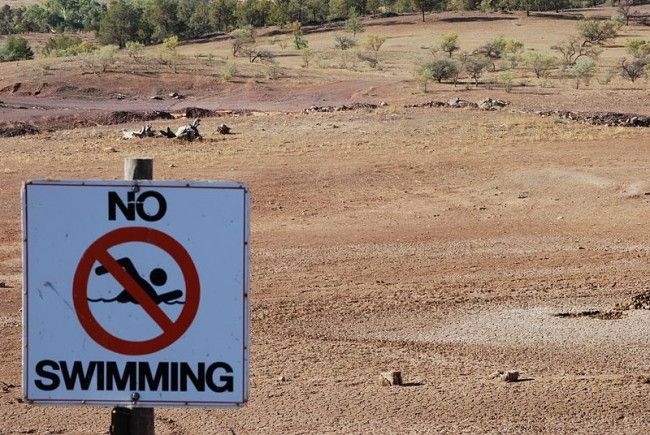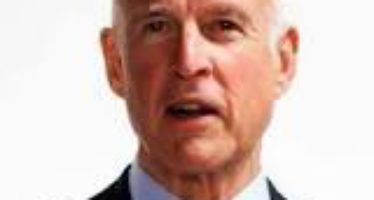Gov. Brown tees up permanent drought measures
 Even as California at long last eased up on drought restrictions, Gov. Brown helped ensure that policies remaining in place will continue indefinitely.
Even as California at long last eased up on drought restrictions, Gov. Brown helped ensure that policies remaining in place will continue indefinitely.
“In a major shift, the administration of Gov. Jerry Brown announced [last week] plans to drop all statewide mandatory water conservation targets it had imposed on urban areas last June,” the San Jose Mercury News reported. “The new rules, which are expected to be approved May 18 by the State Water Resources Control Board, would instead allow more than 400 cities, water districts and private companies to each set their own water conservation targets, as long as they report them to state officials.”
But, by executive order, Gov. Brown also made clear that the pre-drought days of profligate water use were not about to return. “Brown’s order requires that cities submit monthly water use, conservation and enforcement reports to state officials,” Wired noted. “The order also promises updates to both urban and rural drought preparedness guidelines, and bans wasteful things like washing your car without a shut-off nozzle, or hosing down sidewalks.”
Strict regulations
Specifically, Californians did not regain the option of watering their lawns “within 48 hours of rain” or “using ornamental fountains unless the water is recirculated,” the Mercury News explained. Not just constraints on private individuals were left in place. The rules, first instituted in July 2014, also “ban cities and local governments from irrigating ornamental turf on public street medians,” the paper added.
In a statement, Brown put the matter bluntly. “Now we know that drought is becoming a regular occurrence and water conservation must be a part of our everyday life,” he said. “To ensure compliance with these new targets and water management plan requirements, DWR, the State Water Board and the California Public Utilities Commission will work together to develop methods which could include technical and financial assistance, regulatory oversight and enforcement mechanisms,” the statement added.
Itching for normal
The moves quickly triggered a similar response from some water districts. “The metropolitan water district of southern California says it will ease up on some water restrictions, but the state is doubling down on others,” as NPR observed. Although the state’s situation has improved thanks to a significant rainy season, the future remains unclear. “Thanks to El Niño, parts of Northern California saw above average rains and some reservoirs refilled to historical average,” Southern California Public Radio recalled. “Even the snowpack was close to average.”
But the rebound, suggested Discovery News, was limited: “In most of the state it’s half of what’s normal — or less, especially in the southern part of the state, according to California’s Department of Water Resources.” Mark Cowin, the agency’s director, sought to limit expectations. “We are trying to recognize that conditions have changed this year and while we are in a statewide drought, conditions have eased for some parts of the state,” he said, according to the Mercury News. 96 percent of the state has remained drier than average, the National Weather Service’s Mark Jackson told SCPR.
Rebellion brewing
Not all Californians have embraced the prospect of indefinite water strictures. Homeowners associations have labored to endure yard and neighborhood conditions that would never have been tolerated before water rationing and regulation began in earnest.
The wealthy East Bay community of Blackhawk, for instance, raised eyebrows last month by threatening to fine residents who failed to keep their lawns green. “Starting on June 1, any of Blackhawk’s 2,000 homeowners who fail to maintain green lawns or install drought-tolerant landscaping will now risk fines or litigation, the Los Angeles Times reported. “Though local water officials say Blackhawk’s move is premature, and possibly violates a governor-backed emergency declaration to not penalize residents for failing to maintain a lush, green lawn, it is nonetheless something officials anticipated would eventually happen.”
Related Articles
Gov. Brown's budget largely ignores massive debt
SACRAMENTO — Gov. Jerry Brown yesterday released his state budget proposal for fiscal year 2014-15, which begins on July 1, with spending sharply
High-Speed Rail Crashes Into Legislature
APRIL 27, 2011 By KATY GRIMES The costs and the legislation for the California High-Speed Rail Authority keep speeding toward
Moody's Views of Brown's SOS Speech
FEB. 1, 2011 By WAYNE LUSVARDI In a press release dated Jan. 27, Moody’s credit-rating agency began adding unfunded public



